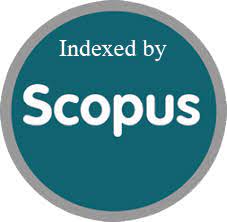Lipo-Polysaccharide Induces Bacterial Autophagy in Cancer Cells As an Anticancer Therapy
Keywords:
Gene expression, Lipopolysaccharide, Toll-like receptors, Breast cancer, AutophagyAbstract
Lipo-polysaccharides (LPS) derived from Escherichia coli (ATCC 8739) have emerged as promising anticancer agents due to their ability to induce bacterial autophagy in cancer cells. This study explores the effects of LPS on breast cancer cell lines, specifically MCF-7 and MDA-MB-231. Our investigation reveals that LPS treatment results in significant up-regulation of genes associated with the Toll-like receptor (TLR) stimulation pathway and autophagy-related processes. This up-regulation suggests that LPS not only enhances immune responses but may also work synergistically with conventional chemotherapy, potentially improving treatment outcomes for breast cancer patients.
The mechanism by which LPS induces autophagy involves activation of immune signaling pathways, which could lead to increased apoptosis in cancer cells. Furthermore, our results indicate that LPS treatment significantly decreases cell viability in both MCF-7 and MDA-MB-231 cell lines, supporting its role in promoting cell death. These findings highlight the potential of LPS as a novel therapeutic agent in translational oncology research, providing a basis for further studies aimed at integrating LPS into existing breast cancer treatment protocols. Overall, LPS presents a compelling avenue for enhancing the efficacy of current cancer therapies and warrants further investigation in clinical settings
.
Downloads
Metrics
Downloads
Published
How to Cite
Issue
Section
License

This work is licensed under a Creative Commons Attribution 4.0 International License.
You are free to:
- Share — copy and redistribute the material in any medium or format
- Adapt — remix, transform, and build upon the material for any purpose, even commercially.
Terms:
- Attribution — You must give appropriate credit, provide a link to the license, and indicate if changes were made. You may do so in any reasonable manner, but not in any way that suggests the licensor endorses you or your use.
- No additional restrictions — You may not apply legal terms or technological measures that legally restrict others from doing anything the license permits.






